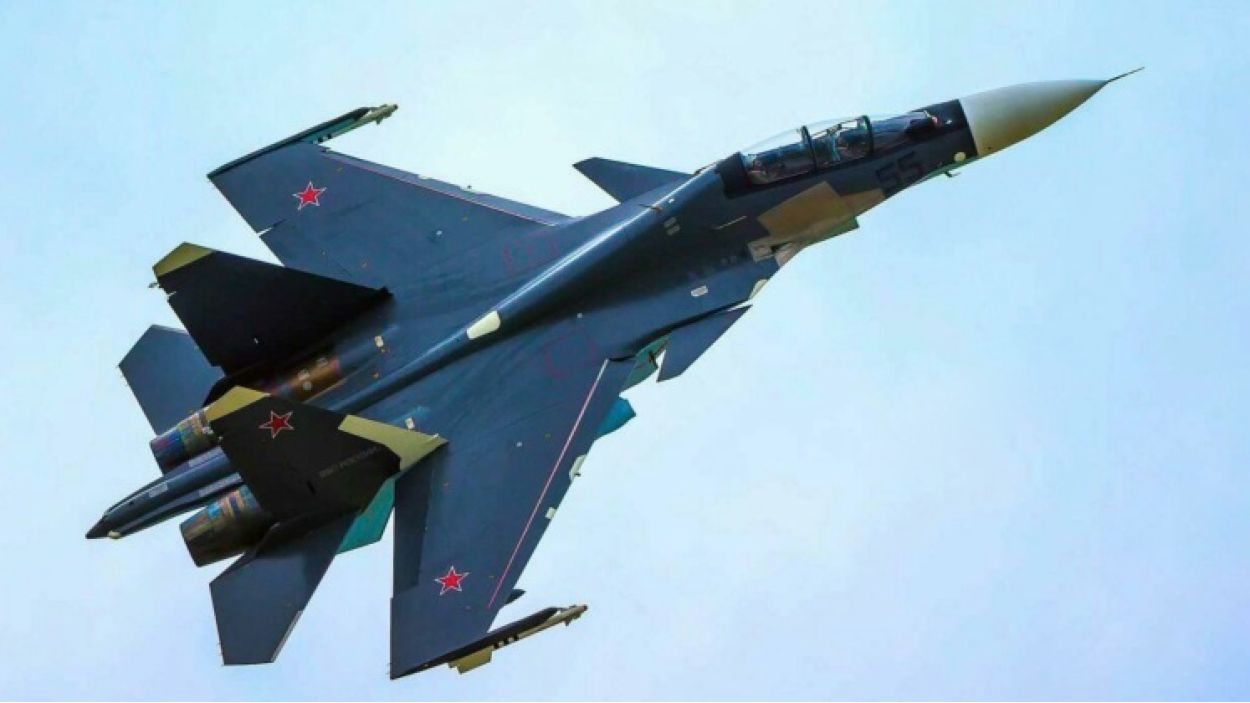Russia has recently supplied the first two Su-30SME fighter jets to the Myanmar Air Force, with the remaining four units expected to be delivered shortly.
Charlie Chan, the trade minister of the Myanmar junta government, shared details about the delivery of Su-30SME fighter jets with a Russian media outlet on September 10, as reported by Reuters.
Chan made this revelation while attending the Eastern Economic Forum, an annual event held in Russia to promote regional economic cooperation and attract foreign investments.
In September 2022, Maj. Gen. Zaw Min Tun, the Spokesperson of Myanmar’s State Administrative Council, disclosed that his nation would soon take delivery of Russian Su-30 SME fighter jets.
The arrival is a direct outcome of a contract inked in 2018 for the procurement of a total of six aircraft of this specific model. However, the precise schedule for the delivery of the remaining aircraft remains uncertain.
According to Rosoboronexport, a Russian agency for exporting and importing defense-related products, the Su-30SME aircraft is known for its effective ADMS (Air Defense Missile System) defense penetration capabilities.
It also boasts impressive combat capabilities thanks to its substantial combat payload. Furthermore, the Su-30SME possesses supermaneuverability, providing a distinct advantage when facing enemy aircraft.
The Su-30SME fighter aircraft is an export version of the Su-30SM, with its primary distinctions centered around radar technology and armaments.
It made its debut at the Singapore Airshow in 2016. Russian media previously observed that unlike the Su-30MKI used by the Indian Air Force, the Su-30SME’s avionics suite doesn’t include French-manufactured components.
Will The Su-30s Be Deployed Against Rebel Groups?
Myanmar’s military has been a consistent customer of Russian military equipment for a considerable time, and this arrangement has persisted even after the military seized power in a coup in 2021.
Despite the change in leadership, the junta continues to receive weapon systems from Russia. On the other hand, the United States has issued a warning expressing its disapproval of Russia’s support for Myanmar’s military rulers.
They consider this support to be unacceptable and destabilizing. The supply of weapons from Russia is seen as contributing to the conflict in Myanmar, which has escalated into a catastrophic situation for the country.
The Myanmar Air Force has also heavily used its fighter jets in operations against rebel forces. This development has raised concerns among Western countries and the international community.
Additionally, the regime employs airstrikes against ethnic armed organizations such as the Arakan Army in western Myanmar.

Amiruddin Arif Ismail, a Malaysia-based former aircraft maintainer and a dedicated military aviation enthusiast, shared his perspective with EurAsian Times, stating that he believes the delivery of the new Su-30SME variant to the Myanmar Air Force is unlikely to have a significant impact on their current combat operations.
When questioned about the potential use of new Su-30 fighter jets against resistance forces, Ismail said, “Myanmar is having internal conflict in their country. They need quick-action aircraft for their alert squadron to perform ground/attack operations.”
The Su-30, being a heavyweight fighter with two engines, may necessitate a longer response time. Ismail noted that for these types of operations, it would be more advantageous to have single-engine light combat aircraft that offer quicker response times.
He noted that the Pakistan-China co-produced JF-17 fighters are currently not in optimal condition, with most grounded. Therefore, at least for now, the SU-30 can support some of its combat operations.
But Ismail suggested that the SU-30s will get into action once the delivery process is complete and an operational squadron for this fleet is established.
Besides that, he elaborated that the SU-30s come with a higher maintenance cost due to the presence of two turbine engines, the incorporation of more advanced avionic systems, and a more significant airframe.
This translates into a relatively more significant financial commitment to the upkeep and operation of these aircraft. Introducing a modern Russian fighter jet into the Myanmar Air Force’s arsenal is crucial, especially considering the challenges in operating its JF-17 fleet.
- Contact the author at ashishmichel(at)gmail.com
- Follow EurAsian Times on Google News